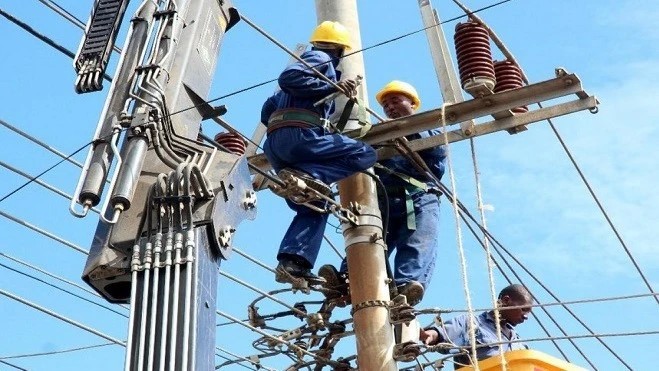Prime
Revealed: Tanzania’s $13 billion universal energy plan

What you need to know:
- Tanzania is seeking a total of $12.9 billion to fast-track access to affordable and sustainable energy for 42 million people by 2030
Cape Town. Tanzania is seeking a total of $12.9 billion to fast-track access to affordable and sustainable energy for 42 million people by 2030 as the country is implementing different initiatives under the ambitious continental Mission 300 initiative, the government has announced.
The appeal was made during the 27th Africa Energy Forum held in Cape Town on Wednesday, where Tanzania unveiled its National Energy Compact Implementation Plan.
The funding will be used to support a wide range of energy projects over the next five years aimed at achieving universal access.
According to Energy permanent secretary Felchesmi Mramba, who made a presentation about the Tanzania’s plans, the financing requirements include $8.85 billion in public investment and $4.04 billion from private capital mobilisation.
The funds are earmarked for generation, transmission, distribution, rehabilitation, last-mile connections, off-grid electrification, clean cooking, and capacity building, he said.
“We are projecting a high demand growth for electricity between 10 percent and 18 percent per annum in the near future,” Mr Mramba told the gathering.
In the span of one year, the capacity of Tanzania’s electricity generation connected to the national grid increased to 4,031.71 megawatts (MW) as of April 2025, representing an 86.6 percent rise compared to 2,138 MW recorded in March 2024, according to the Ministry of Energy budget.
Of the total, 2,716.27 MW (67.4 percent) is generated from hydropower, 1,198.82 MW (29.7 percent) from natural gas, 101.12 MW (2.5 percent) from oil, 5 MW (0.1 percent) from solar, and 10.5 MW (0.3 percent) from biomass.
Mr Mramba also touted Tanzania’s strategic location at the boundary between East African Power Pool (EAPP) and the Southern African Power Pool (SAPP) that he said presents vast opportunities for power trading amongst the pools as Tanzania is a member for both.
“We will be ready by next year to transport power from north to south as we implement some regional projects,” said Mr Mramba.
“Tanzania aims to develop its significant natural gas and renewable energy potentials, including large hydro, solar PV, wind, biomass, and geothermal,” he said.
“Mission 300” is a collaborative initiative led by the World Bank and the African Development Bank, aiming to provide access to electricity for 300 million Africans by 2030. This ambitious project focuses on expanding energy access, boosting utility efficiency, attracting private investment, and improving regional energy integration in Africa.
Among the major components, last-mile connectivity alone will require over $3.5 billion, followed by energy generation at $4.1 billion, rehabilitation projects at nearly $1.4 billion, and clean cooking initiatives needing $800 million.
Mr Mramba also outlined some key actions Tanzania is planning to take in the next 18 months to implement the Mission 300 Tanzania compact.
To lay the groundwork for universal access, Tanzania plans to implement several priority actions, including the establishment of a Renewable Energy Independent Power Producer Procurement Programme (REI4P).
Other actions are creating a trading unit within Tanzania Electricity Company (Tanesco) to enable cross-border power trading; procuring and installing key synchronisation equipment and implementing regional interconnectors such as the Uganda-Tanzania and Tanzania-Zambia 400kV lines.
Tanzania also plans to launch a revolving fund to support credit-based last-mile electricity connections, establishing a National Clean Cooking Fund and reducing taxes and duties on efficient stoves and clean cooking appliances; and operationalising the Renewable Energy Investment Facility and updating cost-reflective tariffs for small power producers (SPPs).
Other plans are initiating pilot independent power transmission projects in areas including Shinyanga, Sumbawanga, Songea, and Kibiti; revising electricity tariff structures under a multi-year, incentive-based regime; enhancing performance improvement plans for utilities with regulatory oversight; and building a Sustainable Energy Future.
The plan is anchored on five strategic pillars: infrastructure rehabilitation and expansion; leveraging regional integration; last-mile connectivity and clean cooking; incentivising private sector participation; and improving the financial viability of utilities.
During the forum, the government reiterated its commitment to reforms, noting progress in policy reviews, utility financial restructuring, and the mobilisation of resources.
Notably, the 2025/26 national budget has already set aside $426.9 million to jump-start key energy projects, including rural electrification and hydroelectric preparatory works, Mr Mramba said.
Tanzania’s push is aligned with its broader development goals and climate resilience strategy. The government is calling on development partners, philanthropies, and private investors to partner in accelerating access to clean, inclusive, and reliable energy across the country.
Other countries also displayed their respective compacts for the Mission 300 initiative, including Senegal and Madagascar.





